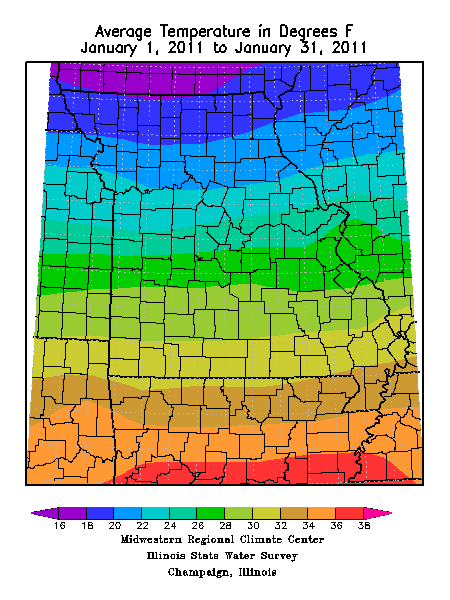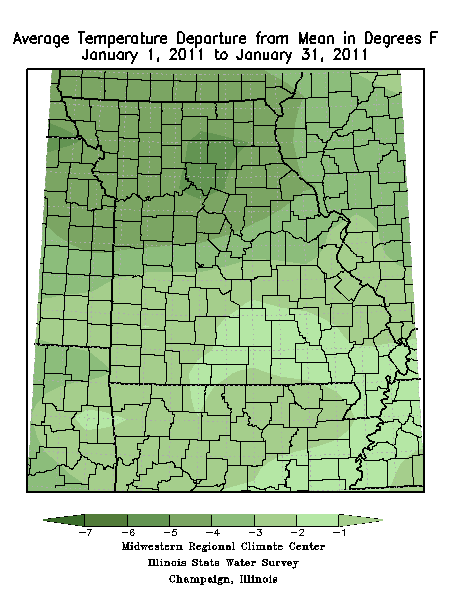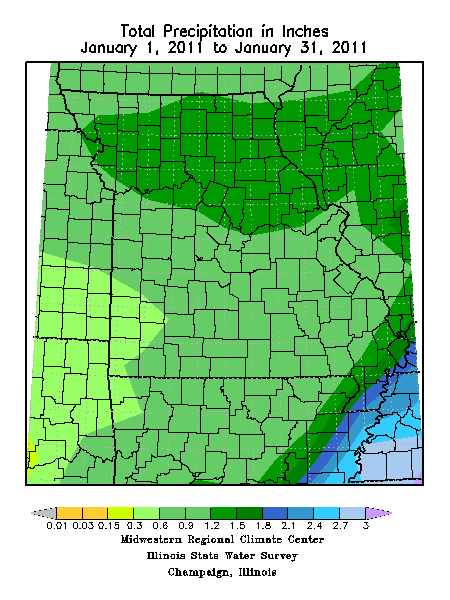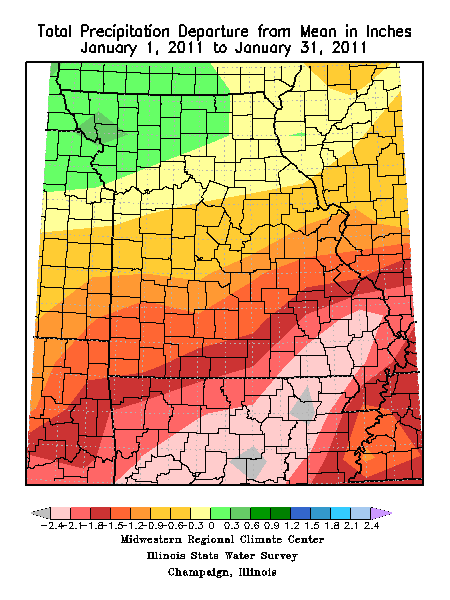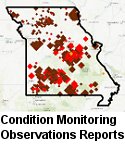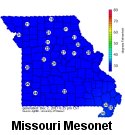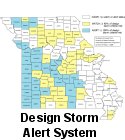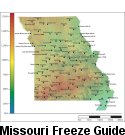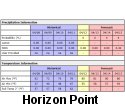
January 2011 Weather and Its Impacts on Missouri
Pat Guinan
State Climatologist
Commercial Agriculture/University of Missouri Extension
Below average temperatures dominated Missouri during January with monthly temperatures averaging 2-4 degrees below normal across the state. A blanket of snow covered the northern half of the state for much of the month and contributed to the coldest departures of 3-4 degrees below normal. Southern sections were generally a couple degrees below normal.
With the exception of northwestern Missouri, statewide precipitation totals averaged below normal and were generally between 1.0-2.0 inches. Southwestern sections were the driest with many counties reporting less the 0.5 inches for the month. A couple reports from observers located in Stone and Newton counties reported 0.06 inches and 0.15 inches, respectively. Generally, heaviest precipitation fell north of the Missouri River and in the Bootheel region where some counties reported more than 2-inches. Observers from Linn and Callaway counties reported 2.46 inches and 2.81 inches of precipitation, respectively. The Bootheel communities of Lambert and New Madrid observed 2.46 inches and 2.60 inches, respectively.
Three notable snow events occurred during the month with the first prolonged event occurring from January 9-11. A blanket of 4-8 inches of snow fell over the northern half of the state with heaviest totals confined to a few northwestern counties. Another winter system impacted central sections, mostly along the I-70 corridor from Kansas City to St. Louis, on January 19-20, where 6-10 inches were common. Lastly, another significant snow event dropped 4-8 inches of snow over northwestern Missouri on January 22-23. Much above normal monthly snowfall totals were reported over northern and central portions where 15-20 inches were common and several locations observed their “Top 10” snowiest Januaries on record.
The state has experienced four consecutive months with below normal precipitation and the longevity and persistence of drought across southern sections has resulted in some agricultural impacts. Livestock ponds are low across southern sections and were forcing residents to seek alternative water resources. Hay supplies are limited due to the dry conditions from last year impacting south central and southeastern sections for much of the growing season. Additionally, soil moisture reserves are depleted and pastures are going to need more precipitation in order to resume growth this spring. With spring planting around the corner, and no indication of the drought leaving soon, additional impacts may arise.
Finally, the cold and snowy conditions across northern and central Missouri adversely impacted livestock in open pastures. The subnormal temperatures reduced the cattle weights and milk production for exposed animals not supplied extra energy rations.
